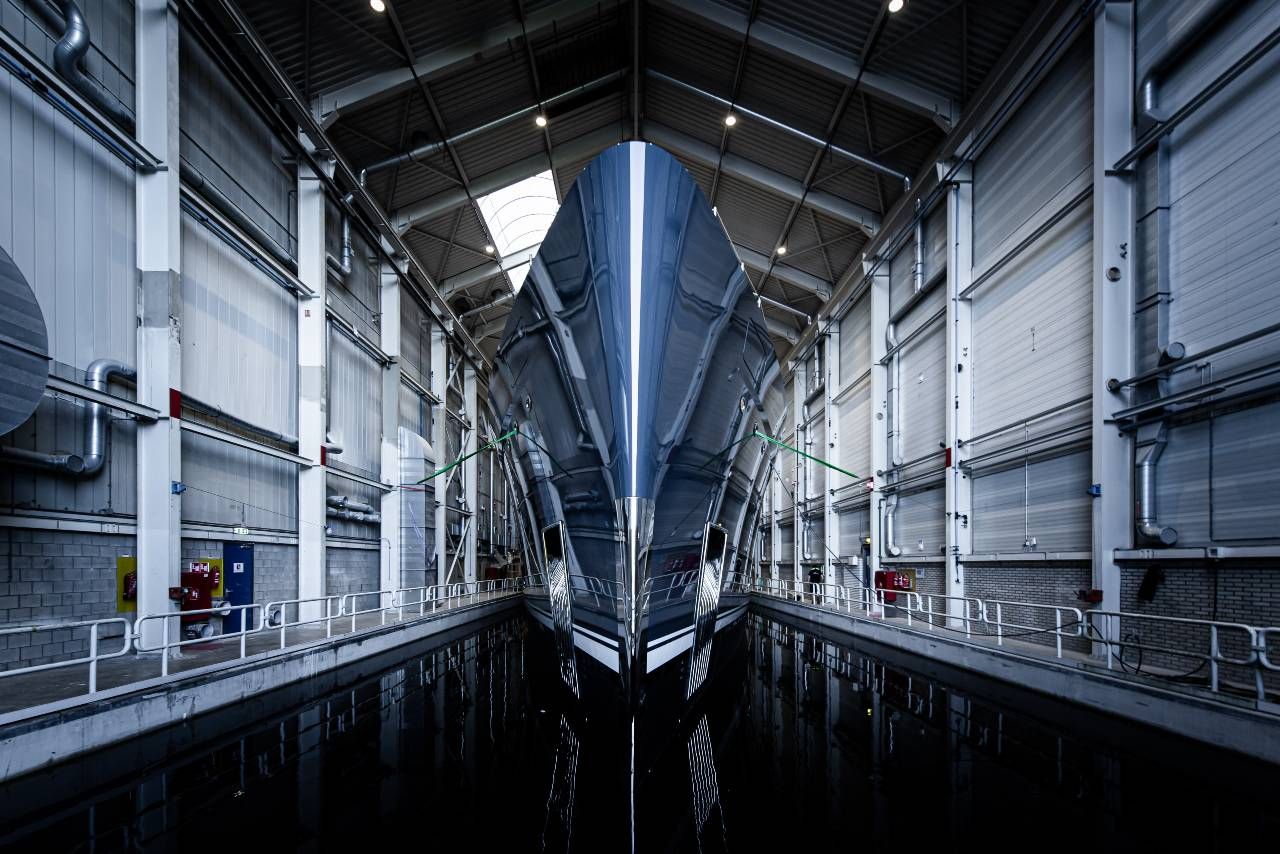Feadship’s Project 713: Solar-Powered And 35% More Efficient Than A Traditional Vessel
Launch of first Feadship yacht to carry solar cells for backup power generation…
June 12, 2024
The Dutch Yard Making Superyachts More Sustainable
This week Feadship launched Project 713, the first superyacht to utilize silicon solar cells, custom-made in the Netherlands. The new technology is expected to produce up to 24 MWh annually for backup power generation, combined with its diesel-electric main propulsion consisting of four generators, a lithium-ion battery and four Caterpillar engines with option to run on non-fossil HVO, (hydrotreated vegetable oil), made using by-products.
Characterized by its distinct Admiral blue steel and white superstructure with a dramatic angular profile optimized to cut through the water, its form and function make a formidable combination.

Above: Project 713 is the first Feadship yacht to incorporate solar powered panels. Image via Feadship.
Project 713 was ranked the “best in fleet,” with a 35 percent below-average impact compared to other traditional yachts in its segment.
The yacht is also the first Feadship superyacht to incorporate a FSC-certified plantation teak for all the decking which is harvested using sustainable methods.

Above: Project 713 on the Royal Van Lent yard on Kaag Island. Image via Feadship.

Above: Feadship’s Project 713 at the shipyard. Image via Feadship.
Net-Zero By 2030: A Wider Mission
Feadship has put sustainability at the forefront of their latest fleet, with a goal of developing “net-zero” yachts by 2030. Their approach to reducing carbon emissions thus far is a blueprint for superyacht builders and across the marine industry to follow.
All major Dutch shipyards are striving to make low-emissions yachts pushing the envelope in sustainable innovation, using YETI ( Yacht Environmental Transparency Index). The tooling benchmarks factors in the broader environmental impact of using components such as CO2, NOx, particulate matter, shore power, and fuel production.
Project 713 is designed by Studio De Voogt Feadship’s sustainability-focused in-house creative team, a team of architects and engineers. Sinot Yacht Architecture & Design penned her contemporary interiors.
Check out the environmentally responsible concept A Superyacht Design Sweet Shop: Feadship Introduces Dunes, proven to eliminate up to 95 percent of the potential negative environmental factors associated with operating a superyacht compared to a traditional yacht.
A Tapestry of Sustainable Superyachts
Project 713 is part of Feadship's successful trio of low-emissions yachts released in 2024.
First was the release of the 276-footer Project 1012, Obsidian recently debuted, the first delivery of the new sustainably-focused fleet. The focus was to reduce energy needed to power the yacht’s hotel by repurposing “invisible” energy. Feadship’s mission for the yacht was to become more energy efficient and emit less carbon than its elder counterpart, the world’s first hybrid vessel, the 274-foot Savannah, delivered in 2015.
The next yacht of the eco-series is Project 821 The World's First Hydrogen Fuel-Cell Superyacht.
Browse for old and new Feadship yachts for sale on boats.com












